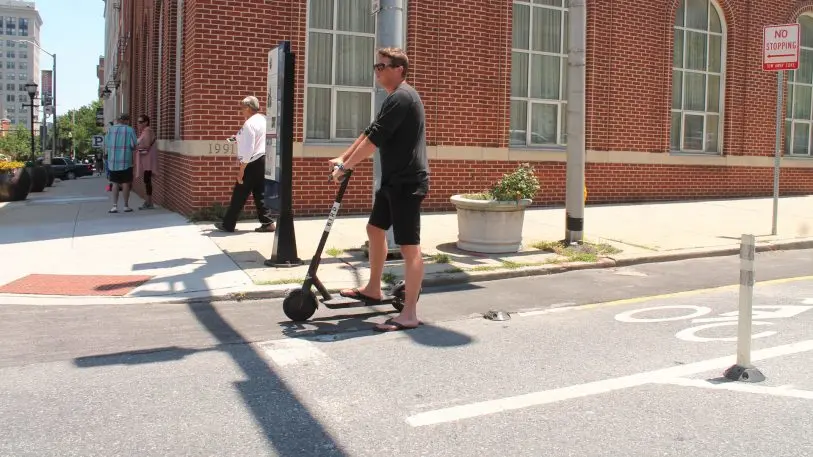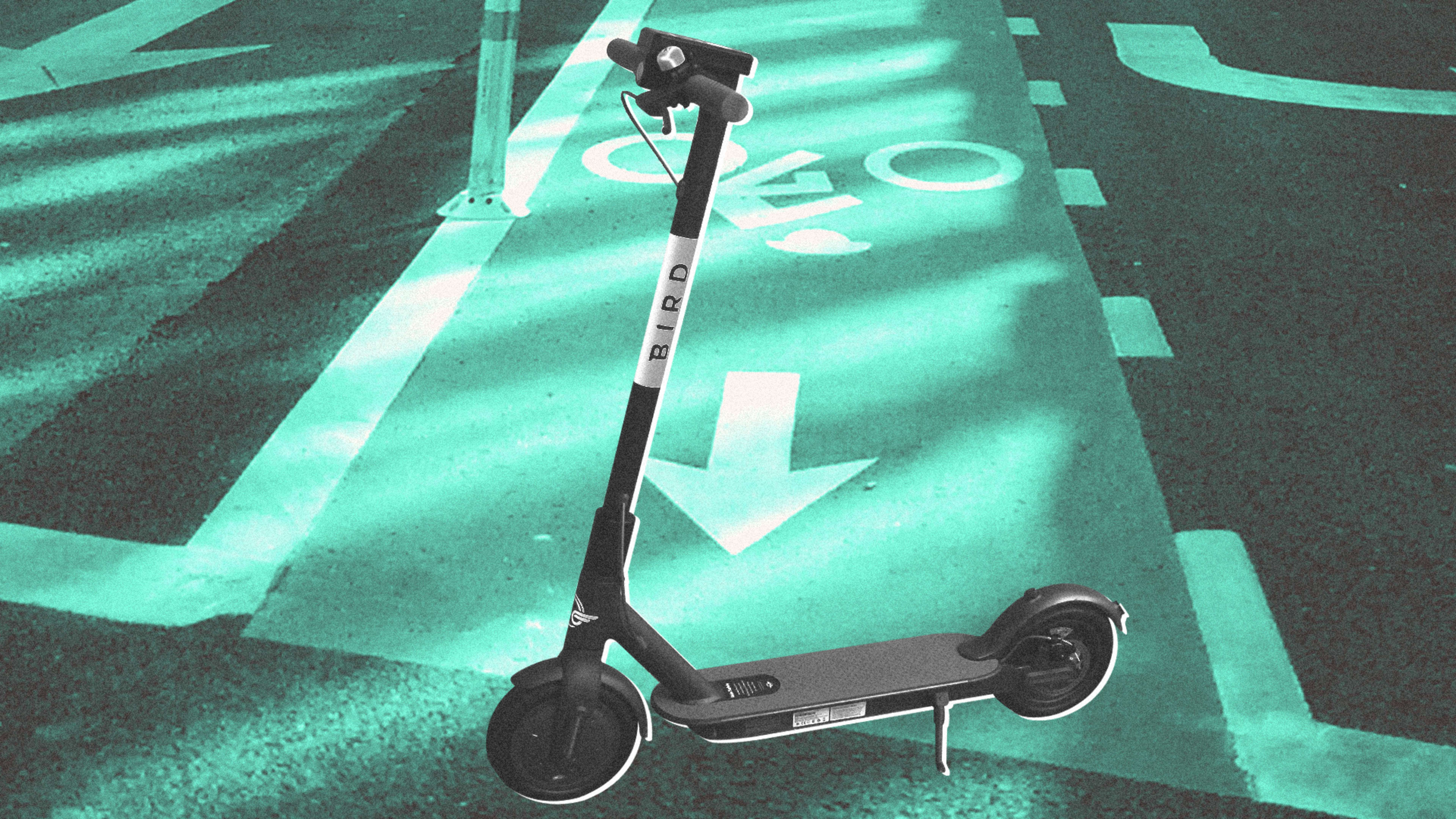Five years ago, Portland, Oregon, created a new policy: Protected bike lanes should be the default choice on major streets. But relatively few of the lanes–which use a physical barrier instead of a simple stripe to keep cars away from people on bikes–have been built. Part of the reason is funding, since lanes with concrete barriers on a two-way street could cost the city as much as $2.8 million a mile.
But could cities use other funding? In early August, the e-scooter company Bird announced that it would create a fund to help cities build more bike lanes and maintain shared infrastructure, pledging to give $1 per scooter per day, and asking others in the “dock-free transportation space” to make the same pledge. The fund is new, and it’s not clear exactly how it would work–Bird wouldn’t speak to Fast Company or disclose how many scooters it has, and the total donation might not be large. But it might give bike-friendly cities like Portland the ability to add some new lanes more quickly, and it might nudge other cities to begin planning for more bike (and scooter) infrastructure.

Money isn’t fundamentally the reason that most cities don’t have better bike lanes, says Kyle Wagenshutz, director of local innovation at the nonprofit People for Bikes, which also helps give cities resources for building bike networks. “Cities have funding. How they choose to prioritize that funding has been the problem. The political will, the political desire, and the pressure to actually make the smart investments is actually what’s happening here.” As new modes of transportation proliferate–like Bird’s controversial scooters, which have launched in many cities without permits and have raised issues about who should use sidewalk space–that’s adding pressure for cities to think about how transportation infrastructure needs to evolve.
But offers of funding could give some cities extra incentive to plan for bike lanes. “The money going into cities to support [infrastructure] can often be a catalytic moment for them,” he says. “I do think there’s value in a private company, regardless if it’s Bird or anybody else, having skin in the game as a way to accelerate these conversations that have to happen.”
Money alone isn’t enough for good bike infrastructure, and the fund may not be useful everywhere. “Planning and policy and expertise are all necessary as well,” says Laura Dierenfield, active transportation and design division manager for the City of Austin. Austin, she says, also doesn’t have a way to receive donations of the kind that Bird is offering, though a regional transit organization, Movability, is taking donations from Bird to help with traffic management. The city already has $20 million from a recent bond to help build a stronger bike network; it also has political support for its long-term bicycle plan, which is in the process of adding more than 200 new miles of bike lanes to a citywide network designed to be safe for all users. In Austin’s case, the fund might not make much difference.
There’s also danger in a company focusing so narrowly on one part of urban planning, when the real solutions are a more holistic redesign of the entire street. “You don’t want to be in a position where there’s one firm that’s setting public priorities for private gain,” says David King, an urban planning professor at Arizona State University. “What would be better is if there’s just sort of general taxation for use of the street, and then there could be a broader multimodal program that doesn’t just invest in bike lanes, but it invests in bike lanes and sidewalks and crosswalks and speed limits and street design and all these other things that go into it.” (Portland, notably, does already have a small surcharge on scooter rentals, and though the money will mostly go to administer the new scooter program, some of it could also be used for infrastructure, or whatever the city deems useful.) The city, King says, should be the independent arbiter that figures out where to direct funds to serve the interests of everyone in a city, not one company in particular. He envisions funding wars between dockless scooter and bike companies, rideshare companies like Uber, and delivery companies like FedEx, all looking for a piece of the public road.
Still, companies have successfully funded specific infrastructure before. In Portland, private funding helped build the city’s streetcars, which were the first modern streetcar system in the U.S., and an aerial tram. And even in Portland, the most bike-friendly large city in the country, bike infrastructure is still lacking. Only 6.3% of Portlanders bike to work. In Amsterdam, where protected bike lanes are standard, 68% of people bike to work or school. (The Netherlands provides significant national funding for bike infrastructure, and cities do as well.) In most American cities, the rate is far lower than Portland, and the national average is below 1%.
But the scale of infrastructure change needed is massive, and Bird’s own contributions might not go far–which makes this seem as much a PR stunt to soften the intense criticism of its tactics as it is an actual push toward better biking infrastructure. If a small city has a couple thousand scooters, and Bird donates $1 a scooter each day–about $750,000 a year–that won’t go far toward building the most costly type of protected lanes. Washington, D.C., limits each dockless company to only 400 vehicles, which would add up to only around $150,000 a year from Bird, and perhaps a little more if others participate. It could help build some lower-cost lanes that rely on plastic posts and parked cars (Portland estimates that its most basic lanes cost around $65,000 a mile). The best result might be that it helps push some other cities a little closer to making the decision to invest in new lanes. So does the mere existence of the scooters, along with dockless electric bikes like Jump, or bikes and scooters from Lime or Ofo or Spin.
“I think these new mobility options are forcing cities to have conversations about how they prioritize their resources and what kind of city they want to be from a transportation perspective going forward . . . having pressure put on leaders who are in places of power and authority to make decisions about the future development of cities is a really good thing,” says Wagenshutz.
Recognize your brand’s excellence by applying to this year’s Brands That Matter Awards before the early-rate deadline, May 3.
